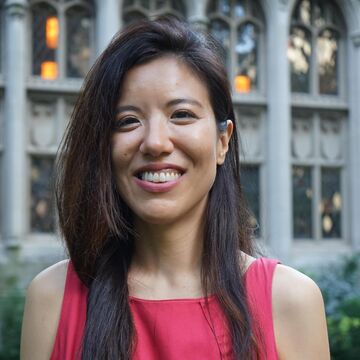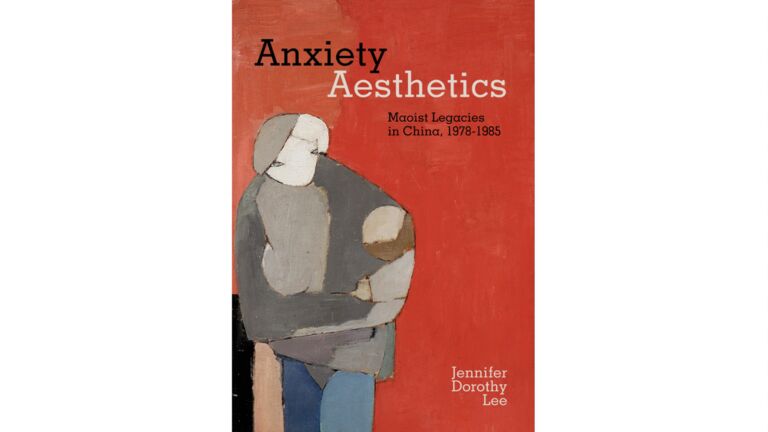| Propaganda&Counterculture-Cinema from Eur to Asia |
Art History, Theory, and Criticism |
2588 (001) |
Fall 2024 |
|
Description
This seminar is part of the 'Global Cinema Histories' film series at the Gene Siskel Film Centre, where we will meet to watch films and discuss them. The term propaganda, originally used for religious purposes to “propagate” faith, has historically been seen as a neutral or even positive tool to disseminate information, and is characterized by forceful messages and aesthetics. For both politicians and activists, propaganda has practical uses. More often than not, today the term elicits strong responses of wariness and dubious denial. The focus of this course is on the filmic output related to propaganda in the 20th and 21st centuries, when new technologies and the use of reproductive media met mass movements and big political shifts. We will cover Italian Fascism and German National Socialism’s “aestheticization of politics”, as Walter Benjamin described it. We will address Eastern European Socialist Aesthetics, revolutionary cinema in China and Hong Kong, the White Terror years in Taiwan, the pop culture of a divided Korea, and the revolutions in South America. We will explore the relationship of propaganda to colonialism, imperialism, and globalization. We will consider official politics, grassroots movements, and the blurred lines distinguishing these realms. Writing short reflections and reviews, some reading, and lots of time for discussion will structure the course.
|
Class Number
2272
Credits
3
|
| 'China/Avant-Garde': Contemporary Chinese Art since the 1970s |
Art History, Theory, and Criticism |
3469 (001) |
Spring 2024 |
|
Description
What counts as ?avant-garde?? Can a work of art be radically new and traditional at the same time? Can it incorporate Western art forms and techniques and still be considered Chinese art? These were questions that Chinese artists coming out of the Cultural Revolution grappled with as they sought to reconcile Chinese artistic traditions and historical realities with Western modern and contemporary art practices. This course takes its name from the seminal 1989 exhibition China/Avant-Garde, which sought to survey the most advanced practices of the day and stake a claim for Chinese avant-garde art in relation to the shifting categories of ?modern,? ?postmodern,? ?contemporary,? ?Eastern,? and ?Western? art. Considering this exhibition and other developments from the late 1970s to the present, we will chronologically study roughly four decades of art and exhibition practices during a period of unprecedented socio-economic, political, and spatial change. We will look at a wide variety of art forms (painting, sculpture, photography, installation, video, performance, conceptual art, socially engaged practices); key exhibitions; and diverse artists including Ai Weiwei, Cai Guo-Qiang, Lu Yang, Song Dong, Xu Bing, Zhang Dali, Zhang Huan, and Yin Xiuzhen, among others. Through weekly lectures, discussions, select readings, and museum visits, students will develop the vocabulary and visual reasoning necessary to analyze a wide variety of challenging artworks, situate them within a historic and theoretical context, and construct informed arguments about them.
|
Class Number
2208
Credits
3
|
| Chinese Cinema |
Art History, Theory, and Criticism |
3491 (001) |
Summer 2024 |
|
Description
This course explores the expression of social imagination in modern China, from the early 20th century to the present day, through the cinematic medium. Taking a selection of representative films and film criticism particular to the mainland, the course will survey constructions of social space throughout distinct historical periods. These include the mise-en-scene of the 1930s silver screen (Wu Yonggang?' The Goddess), Maoist revolutionary representation (Jiang Qing's model opera-ballets), as well as critical portrayals of globalization in the 21st century (Jia Zhangke's The World).
|
Class Number
1283
Credits
3
|
| Mass Demonstration: Art, Politics, and Collective Action in Asia |
Art History, Theory, and Criticism |
4452 (001) |
Spring 2024 |
|
Description
After the death of Mao, protests practices that came to define China's 'Peking Spring' in the late 1970s served not only to articulate everyday citizens' collective demands for new polity, but also to forge their emergent expressions of selfhood and society through art. This course interrogates the ways in which such aesthetic formations--exhibitions of art, societies of painting and photography, poetic performance, documentary and film production--arise from the spontaneity of collective action in the midst of civil unrest and cold war (Hong Kong), or in the aftermaths of revolution and global conflict (Korea, PRC). Examining the simultaneity and mutual constitutions of art and politics that come to define East Asian modernity at key moments throughout the 20th and 21st centuries, the course will consider the contradictory and conflicted functions of new art as a medium of social and cultural transformation.
|
Class Number
2207
Credits
3
|
| Thesis II |
Arts Administration and Policy |
6095 (006) |
Spring 2024 |
|
Description
A master's thesis is required for completion of the master's degree in arts administration. The thesis should demonstrate a student's ability to design, justify, execute, evaluate, and present the results of original research or of a substantial project. In this class students work closely with an MAAAP program advisor, and meet frequently with other MAAAP participants in groups and in individual meetings. The thesis is presented, in both written and oral form, to a thesis committee for both initial and final approval. You must be a Master of Arts in Arts Administration and Policy student to enroll in this course.
|
Class Number
2519
Credits
3
|
| Perception |
Masters in Fine Arts Low Residency |
6530 (001) |
Summer 2024 |
|
Description
Framed by the Low-Residency MFA theme of 'Poetics,' this course is an art historical investigation into perception in connection with aesthetics in four key areas: Black Arts Movement, Afro-Futurism, Ritual Art Performance in the African Diaspora, and African Art and Design. With an eye to the concept of ?sculpting space? and location in the liminal and the margins as defined by bell hooks, we will consider perceptions of Self and Other, identity expression as intentional resistance and creative expression, ?Africa? and notions of ?African art,? and performative modes of production. How does work become canonized and remembered? How do movements form a foundation for contemporary practices? This course understands the artist as a kind of divine sculptor, trickster-DJ-griot, considering methodologies such as oral history, indigenous systems, and community legacies to critique time as linear and interrogate perceptions of body, location, belonging, and what it means to center oneself via art.
|
Class Number
1218
Credits
3
|
| Thesis Tutorial II |
Art History, Theory, and Criticism |
6999 (006) |
Spring 2024 |
|
Description
This independent study program for Master of Arts in Modern Art History, Theory, and Criticism candidates is taken in the final term of coursework.
|
Class Number
2540
Credits
3
|


